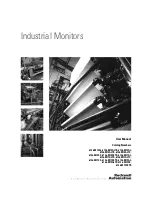
Section 14: Main Color Board Digital Theory of Operation
14-21
14.15.1 NIBP System Overview
The NPB-4000C Non-Invasive Blood Pressure (NIBP) measurement and display
operations described in this section include the pneumatics of the inflatable cuff
and control valves, the specialized front end NIBP circuitry, some of the
µ
P
Memory and Control circuitry, some of the Power System, and specific switches
on the Keypad. The major blocks involved from the cuff to the microprocessor
are the pump, pressure transducers, control valves, digital control circuits, and
the analog detection circuits. The pump is mounted on the Power System
assembly and is driven by a pulse-width-modulated (PWM) signal from the
Digital Hardware section of the Main Board assembly. That signal is gated by
an enabling signal originating in the microprocessor of the section of the Main
Board. The pumped air is ducted through tubing and valves mounted on the
Main Board and made available at the front end connection to the cuff.
Principle of Measurement
Prior to making blood pressure measurements, the cuff is placed around the
arterial location of an upper arm (left or right). The NIBP measurement system
is initiated by commands responding to pressing the NIBP switch on the front
panel. The cuff is inflated at a rate controlled by the pump excitation current to
a pressure above diastolic, at which level the artery is effectively occluded.
Then, as the cuff pressure is reduced at constant rate, the pressure transducers
provide analog signals to the digital hardware where the are digitized and
processed to obtain systolic, diastolic, and mean blood pressure values, as well
as the beat rate. The technique for translating the pressure signals into the
required measurements makes use of the action of the oscillatory characteristic
of the returning arterial pressure. The phenomenon is illustrated in the diagram
below.
See Figure 14-11. Systolic pressure is defined as the point at which oscillation
increases sharply. As the cuff deflates, oscillation amplitude increases to a
maximum, and then decreases. The point of peak oscillation amplitude is the
mean arterial pressure. The point at which oscillations cease is defined as the
diastolic pressure.
Figure 14-11: Oscillatory Characteristics Diagram
Summary of Contents for NELLCOR NPB-4000
Page 66: ... THIS PAGE INTENTIONALLY LEFT BLANK ...
Page 68: ...Section 7 Spare Parts 7 2 Figure 7 1 NPB 4000 C Top Assembly Drawing ...
Page 70: ...Section 7 Spare Parts 7 4 Figure 7 2 NPB 4000 C Front Case Assembly Diagram Sheet 1 of 2 ...
Page 72: ...Section 7 Spare Parts 7 6 Figure 7 3 NPB 4000 C Front Case Assembly Diagram Sheet 2 of 2 ...
Page 74: ...Section 7 Spare Parts 7 8 Figure 7 4 NPB 4000 C Rear Case Assembly Diagram Sheet 1 of 2 ...
Page 76: ...Section 7 Spare Parts 7 10 Figure 7 5 NPB 4000 C Rear Case Assembly Diagram Sheet 2 of 2 ...
Page 78: ...Section 7 Spare Parts 7 12 Figure 7 6 NPB 4000 C Power Supply Heat Sink Assembly Diagram ...
Page 80: ... THIS PAGE INTENTIONALLY LEFT BLANK ...
Page 96: ... THIS PAGE INTENTIONALLY LEFT BLANK ...
Page 114: ... THIS PAGE INTENTIONALLY LEFT BLANK ...
Page 140: ... THIS PAGE INTENTIONALLY LEFT BLANK ...
Page 180: ... THIS PAGE INTENTIONALLY LEFT BLANK ...
Page 192: ... THIS PAGE INTENTIONALLY LEFT BLANK ...
Page 208: ... THIS PAGE INTENTIONALLY LEFT BLANK ...
Page 210: ... THIS PAGE INTENTIONALLY LEFT BLANK ...
Page 211: ...Section 17 Drawings 17 3 Figure 17 1 MP 205 PCB Schematic Sheet 1 of 2 ...
Page 212: ...Section 17 Drawings 17 5 Figure 17 2 MP 205 PCB Schematic Sheet 2 of 2 ...
















































